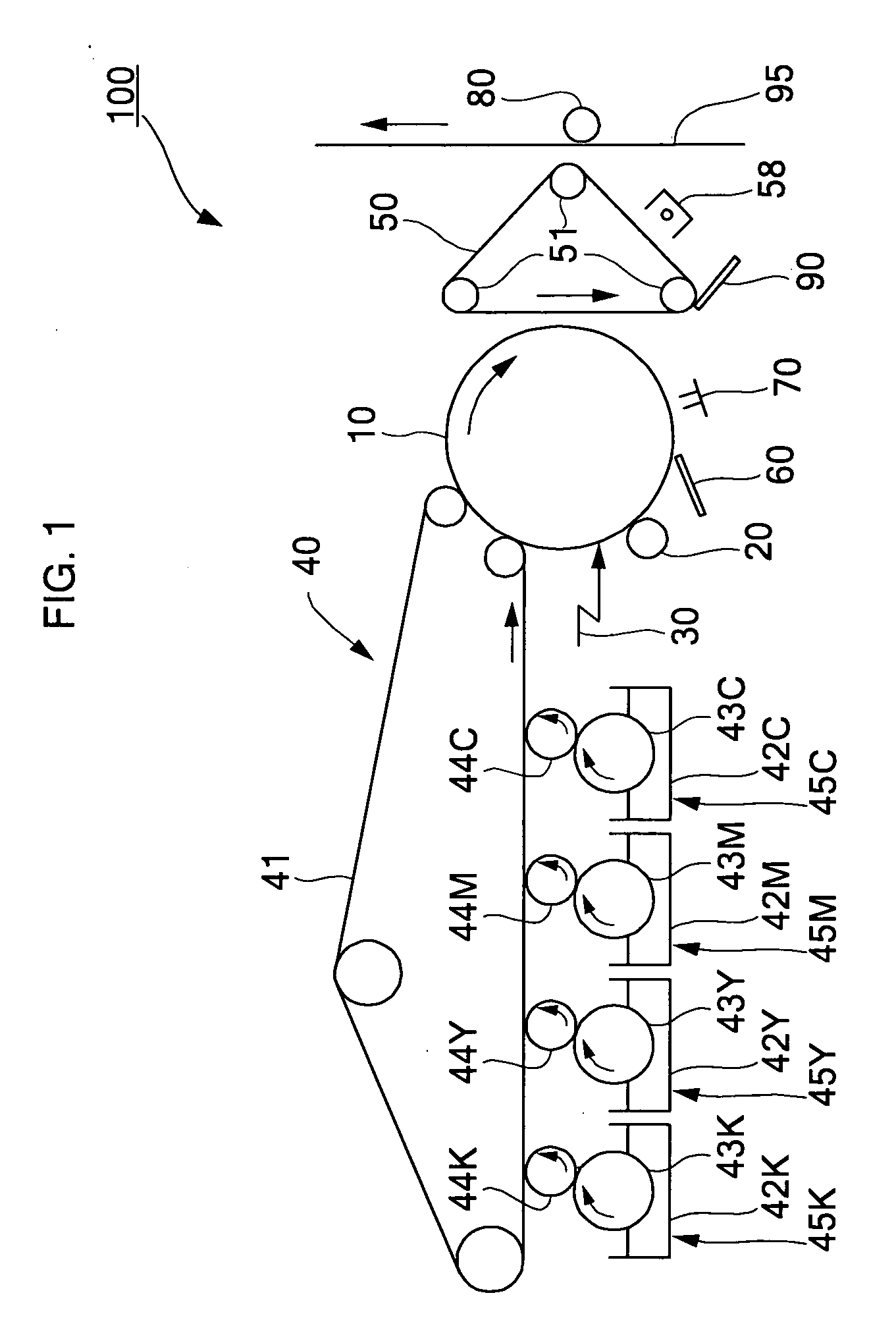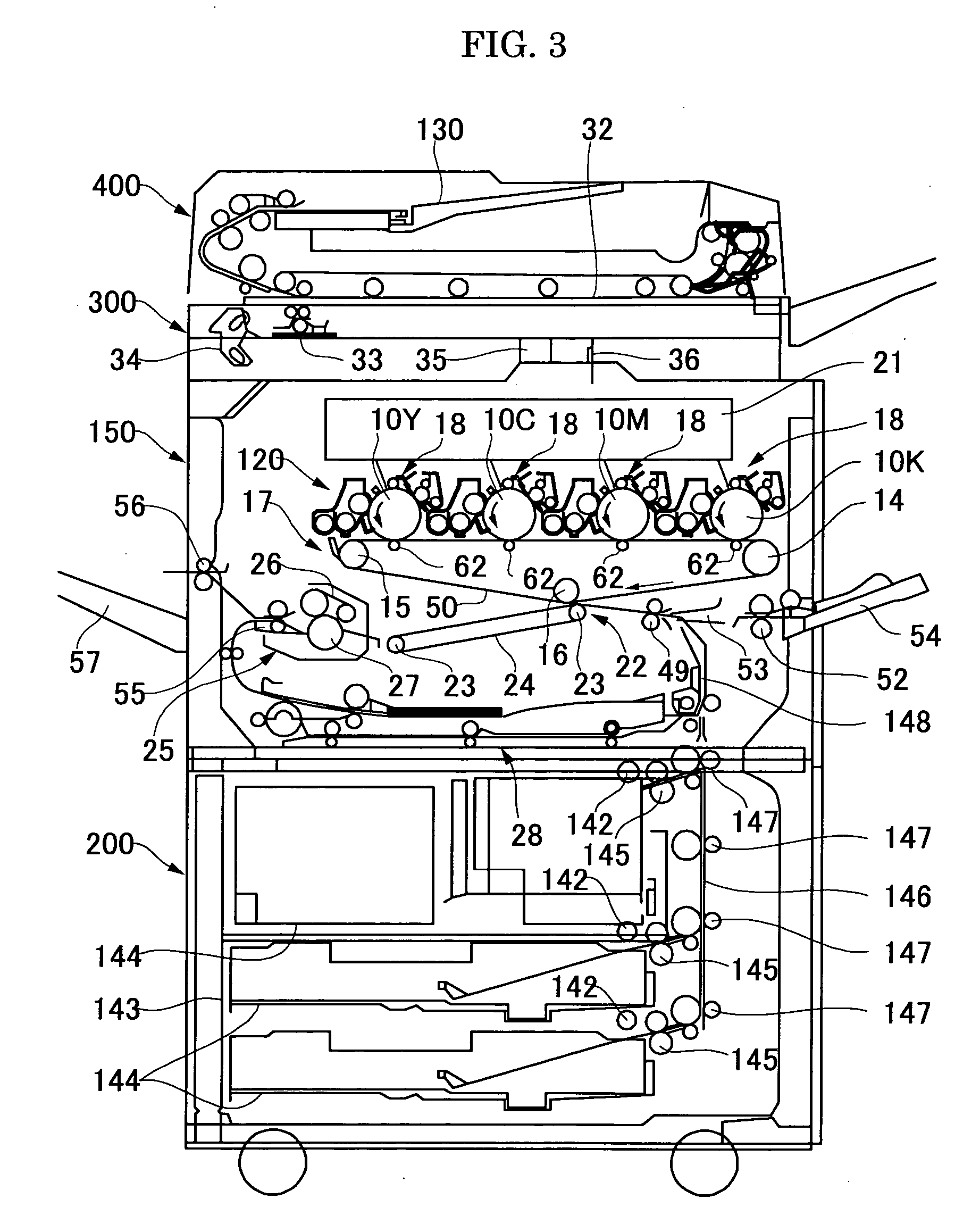Toner and method for producing the same, and image-forming method using the same
a technology of toner and image, applied in the field of toner, can solve the problems of insufficient satisfaction of recent demands of conventional dry toners, inability to efficiently produce high-quality images, and limited miniaturization of dry toners which are crushed and classified, etc., and achieves high image density, high resolution, and high quality.
- Summary
- Abstract
- Description
- Claims
- Application Information
AI Technical Summary
Benefits of technology
Problems solved by technology
Method used
Image
Examples
synthesis example 1
Synthesis of Crystalline Polyester 1
[0429] Into a 5 liter four necked flask equipped with a nitrogen gas feed tube, a dewatering tube, a stirrer and a thermocouple, were poured 2,070 g of 1,4-butane diol, 2,535 g of fumaric acid, 291 g of trimellitic anhydride, and 4.9 g of hydroquinone, and the mixture was allowed to react at 160° C. for 5 hours, at 200° C. for 1 hour, and at 8.3 kPa for 1 hours, to thereby yield Crystalline Polyester 1.
[0430] The thus obtained Crystalline Polyester 1 had a melting point of 128° C., DSC endothermic peak temperature of 130° C., a number average molecular mass (Mn) of 900, mass average molecular mass (Mw) of 3,500, and a ratio Mw / Mn of 3.89. Note that Mn and Mw were obtained in terms of a molecular mass distribution of a tetrahydrofuran (THF) soluble part measured by means of gel permeation chromatography (GPC). The infrared spectrograph of the Crystalline Polyester 1 had an absorption band based on 6 CH (out-of-plane deformation vibration) of ole...
synthesis examples 2-6
Synthesis of Crystalline Polyesters 2-6
[0431] Crystalline Polyesters 2-6 of Synthesis Examples 2-6 were synthesized in the same manner as Synthesis Example 1, provided that the usage amount of the acid components were changed as in Table 1. The properties of the thus obtained crystalline polyesters are summarized in Table 1.
TABLE 1acid component (g)DCSynthesistrimelliticTm.emodothermicδCHExamplefumaric acidmaleic acidanhydrate(° C.)MwMnMw / Mn(cm−1)122822542911281303,5009003.899702253502911391402,8008003.50968320285082911131193,3007004.7197041775762291941001,5008001.8897051775762582919911,9002,4004.9699961268126858255539,7353,4252.84961
production example 1
Preparation of Crystalline Polyester Dispersion 1
[0432] Into 2 L metal contained were poured 100 g of Crystalline Polyester 4 of Synthesis Example 4 and 400 g of ethyl acetate, and the mixture was dissolved by heating at 79° C. (Tm) and then cooled in iced water. The resultant was added with 500 ml of glass beads having a diameter of 3 mm and crashed by means of Batch-type Sand Mill (manufactured by Kanpe Hapio Co., Ltd.) for 10 hours, and ethyl acetate was partially removed to thereby Crystalline Polyester Dispersion 1 having an volume average particle diameter (Dv) of 0.4 μm, and a solid content of 50%.
PUM
| Property | Measurement | Unit |
|---|---|---|
| acid value | aaaaa | aaaaa |
| pH | aaaaa | aaaaa |
| conductivity | aaaaa | aaaaa |
Abstract
Description
Claims
Application Information
 Login to View More
Login to View More - R&D
- Intellectual Property
- Life Sciences
- Materials
- Tech Scout
- Unparalleled Data Quality
- Higher Quality Content
- 60% Fewer Hallucinations
Browse by: Latest US Patents, China's latest patents, Technical Efficacy Thesaurus, Application Domain, Technology Topic, Popular Technical Reports.
© 2025 PatSnap. All rights reserved.Legal|Privacy policy|Modern Slavery Act Transparency Statement|Sitemap|About US| Contact US: help@patsnap.com



